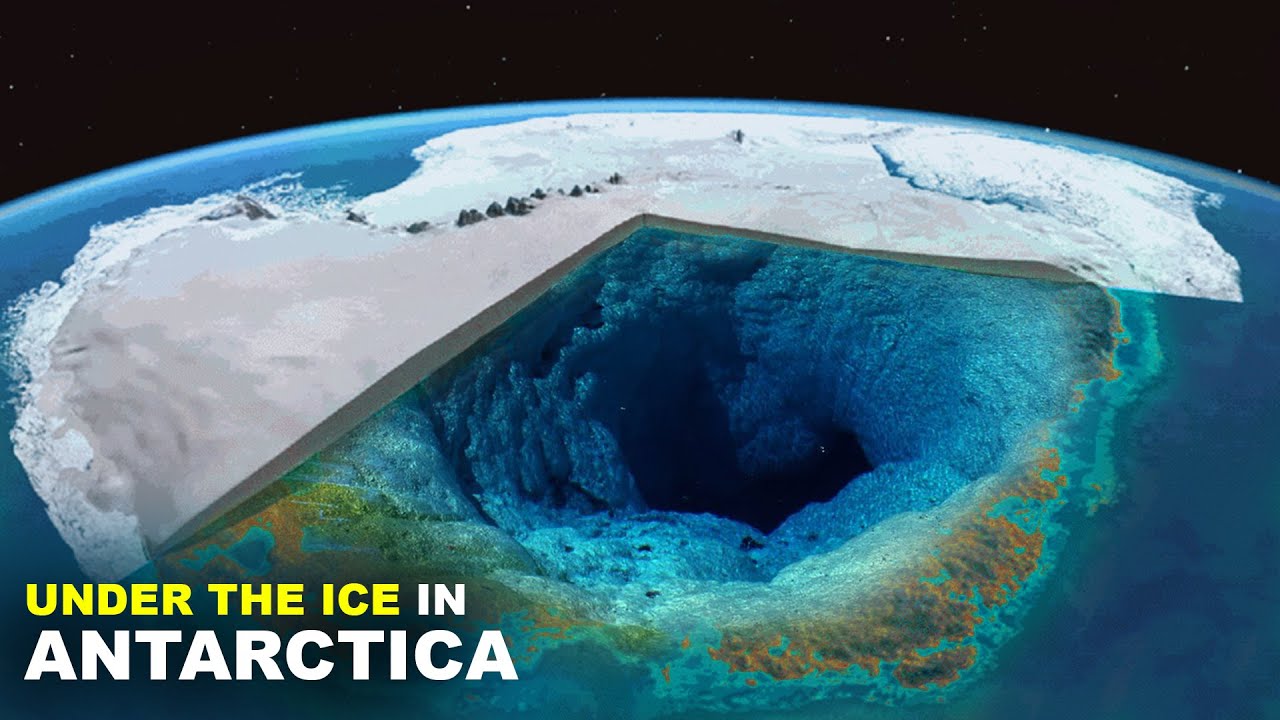What’s Under The Ice In Antarctica?

Over the past century humanity has studied it surface quite well.
But was most interesting is what’s hidden deep beneath.
What unique ecosystems are hidden beneath the ice in Antarctica, and why are they of interest to scientists?
Antarctica is a locality that has fascinated scientists and explorers for centuries. It is the driest, coldest, and windiest place on the planet, with temperatures as low as -80°C. As a result, its vast icy landscape has been largely unexplored until recently. Beneath its ice sheets and glaciers, Antarctica holds secrets that could unlock significant scientific knowledge about the past, present, and future of our planet. So, what’s under the ice in Antarctica?
Antarctica is a land mass that has been covered by ice for millions of years. The ice is believed to be up to 4.6 kilometers thick and covers over 98% of the continent’s landmass. Despite this, there is an expansive, warm, and wet world that exists under this icy landscape. Many scientists have become increasingly interested in what is happening under the ice because it contains unique ecosystems, vast reserves of minerals and fluids, and ice that holds clues about our planet’s past climate.
The ice sheet on Antarctica is so thick that it depresses the land beneath it, creating vast basins, valleys, and rivers that all hold water. The water under the ice is what interests scientists the most because it contains ecosystems that are completely isolated from the rest of the world. These ecosystems are comprised of life forms living in complete darkness, fed by energy derived from chemical reactions instead of the sun. Scientists believe these unique organisms could reveal insights about the origin of life on Earth and how life might exist in other planets and moons in our solar system.
Another reason scientists are intrigued by Antarctica’s hidden ecosystems is because they could hold the key to developing new treatments for diseases. Many of the chemical compounds produced by these organisms have unique properties that could prove useful in treating different ailments. Furthermore, the lack of human activity means these ecosystems are relatively pristine and could provide samples that have not been contaminated by human-created chemicals.
In addition to the unique ecosystems, Antarctica’s subglacial world contains vast reserves of minerals and fluids. The ice sheet is believed to be hiding mineral deposits worth trillions of dollars, including gold, silver, copper, zinc, and lead. There are also substantial reserves of hydrocarbons, including oil and natural gas. The exploitation of these minerals could create a new industry that could transform the economic landscape of the region.
Finally, the ice covering Antarctica is a time capsule of our planet’s past climate. As snow accumulates and compacted over the millennia, large quantities of atmospheric gases are trapped within the ice. This means that ice core samples can reveal insights about the Earth’s climate history, including atmospheric composition and temperature changes. By examining the composition of these ice cores, scientists can understand past climate changes and use this knowledge to make predictions about future climate change.
In conclusion, what’s under the ice in Antarctica is a wonderland of unique ecosystems, mineral reserves, and historical data. As technologies continue to evolve, we can expect to learn more about this exciting part of our planet in the years ahead. However, it is important that any exploration and exploitation of the subglacial world of Antarctica is done in a responsible and scientifically informed way, preserving the natural resources and ecosystems for future generations.









8 Fall FASHION TRENDS To Actually Wear in 2019!
How to Get Away with Stealing
How Paranoid Schizophrenia Impacts My Life – A Day in the Life
LIFE HACKS for EMBARRASSING MOMENTS that ACTUALLY WORK
This Single Level Tiny House Is Perfect For Disabled & Retirement Aged People